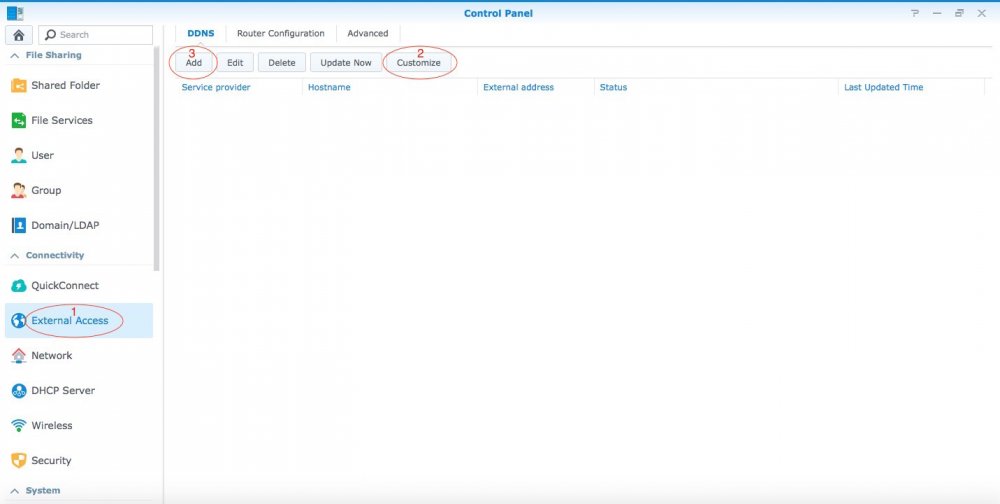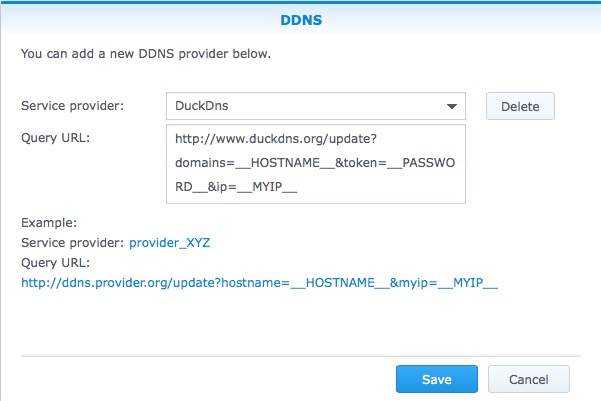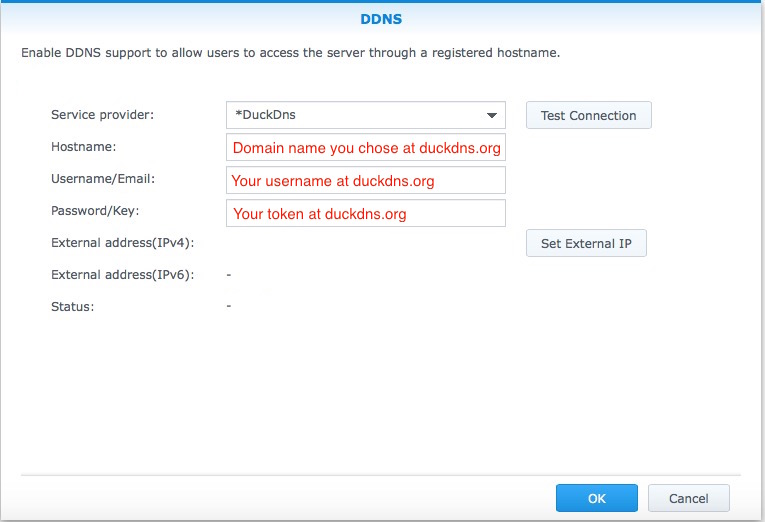Leaderboard
Popular Content
Showing content with the highest reputation on 08/18/2020 in all areas
-
Any direction you go should be fine. Since this will be your "archive" machine, you may find it better to go with a completely fresh install, then if you like restore your previously saved configuration backup with usernames, networking, etc. I've had both 6.1.7 and 6.2.3 on my machines, both are great. One is the previous generation HP N40L, which works straight out of the install using 1.02b/1.03b respectively. If you want the hard drives to hibernate, that may be a reason to stay with 6.1.7 [unless there is new information about hibernation stability in 6.2.3]. If you do decide to roll your old installation forward, make sure you delete the old ".xpenoboot" folder, otherwise 6.2.3 will wreak havoc on your NIC. My upgrade path was 5.2 to 6.1.7 to 6.2.3, but that took a little more time.2 points
-
List of mirror links to DSM 5.x and DSM 6.x boot loaders. Please drop a comment if you see a broken link or some erroneous information. All other posts will be deleted. Before downloading a loader I suggest you read this topic (for DSM 6.x) or this topic (for DSM 7.x) to know which loader to download. DSM 7.x - Read Flyride topic Tinycore-redpill (TCRP) Releases | Download is straight from Github. Link to code: https://github.com/pocopico/tinycore-redpill OR (the choice is yours) Automated RedPill Loader (ARPL) Releases | Download is straight from Github. Link to code: https://github.com/fbelavenuto/arpl --------1 point
-
If you have a dynamic IP, you will need to setup a DDNS to access your NAS from outside your local network. So to start thing off you will need to open an account with a DDNS service provider. There are plenty out there, some paid, some free. The two below are the ones that I use personally. They are free. If you find others then you should also be able to use those. Some of these providers might already be part of the list included by Synology in which case you can skip the 'Customize' button and simply use the 'Add' button and select your service provider from there. The configuration example I am giving below will be based on duckdns.org because it's the easiest I have seen out there but unfortunately it is not included in the DDNS service providers list included by Synology so you will need to use the 'Customize' button first. - http://www.duckdns.org - http://www.nsupdate.info Once you have chosen your domain with duckdns.org you will need to configure DSM accordingly. So here is how to: In Control Panel go to External Access (1), then click on Customize (2). A new window should open. You need to fill in as per the image. To save you some time you can copy paste from the code tag provided below the image: http://www.duckdns.org/update?domains=__HOSTNAME__&token=__PASSWORD__&ip=__MYIP__ When you are done click Save. The window should close. Now click on Add (3), see first image. A new window should open. Select *DuckDns from the service provider list and fill in your duckdns domain, username and token: Click on Test Connection to verify that it's working. If it is working you should see the word Normal in green next to Status. You can then click Ok. If it is not working then it means you screwed up somewhere. Recheck query URL, domain, username and token. All that is left to do is to configure port forwarding on your router. This is called at times "port forwarding" or "port mapping". You need to check with your router's user guide as sometimes the wording differs from one brand to the other. The port(s) you will be forwarding to your box also need to be opened on DSM's firewall else DSM will refuse access to the port/service requested. If your ISP implements double NAT you might have to do some additional configuration to your router to allow the ports to be forwarded correctly. Check with your ISP first and also check this site or this site on how to overcome double NAT. Google is your friend. Note of caution here: If you want to make things very safe you would only port forward VPN ports. This means that you can only access your box via VPN which in turn then gives you full access to the box (and to your local network if configured accordingly) once a VPN connection is established. You could also port forward the GUI ports (usually 5000/5001 or the ones you would have customised). This would give you full GUI access to DSM from outside of your network but this can be unsafe specially if you don't have a strong password and proper firewall and safety mechanisms configured in DSM. You could also just forward the port(s)/service(s) that you need. It really all depends what you are using your box for but in most cases the VPN solution is the safest although not the most convenient. NEVER EVER port forward port 22 unless you know exactly what you are doing. To test that your box is accessible from the outside world while being at home you could use your smart phone in data mode (not in wifi) at the following address: http://[yourdomain].duckdns.org:[port number] or https://[yourdomain].duckdns.org:[port number] - Do no put www1 point
-
Ah! C1E needs to be disabled in the BIOS. Which may, or may not be the problem. I found my notes for v1.02b and they also say 1) Make sure c1 is disabled in bios. 2) Select force install (install pat) 3) one reboot select top option (dont select amd) 4) give it time 5-10 mins to come up (mine took around 10 mins first time)1 point
-
6.1.7/6.2.3 each require a different loader [1.02b/1.03b respectively] which is also nicely summarized here. The features enabled/disabled with each configuration are helpful in your decision:1 point
-
If when you boot v1.03b it finds an existing system on your drives, then it will try to do an upgrade. You should specify a manual installation as you have said. I can't see anything special about 6.1.7 vs 6.2.3 in terms of an upgrade. If any release is required in terms of a stepping stone from 5 to 6, then it would be one of the earlier releases of version 6. The bit that I am missing is what you need to keep from your v5 system given that you have copied all your data and settings to the new real Synology. If the upgrade from v5 failed, I would probably clear all the partitions from the disks and just create a fresh 6.2.3 system (and I know that works!). Bear in mind that many of the packages will want to update themselves when you move.1 point
-
Synology is using plain vanilla NUT. It's actually quite flexible and works with a lot of UPS's. You can even get the Synology to slave to an external NUT instance with a little bit of config file editing. I'm using a CyberPower UPS.1 point
-
Thanks! I realized after I made an account that I needed an account to download attachments. Sorry for bugging you, and thanks so much for this guide.1 point
-
1 point
-
6.2.1 and 6.2.2 had problems with driver compatibility and were difficult to make work. Stay on 6.1.7 or go to 6.2.3, you'll probably have a different result than with 6.2.2.1 point
-
1 point
-
1 point
-
- Outcome of the update: SUCCESSFUL - DSM version prior update: DSM 6.2.3-25426 - Loader version and model: Jun's Loader v1.03b DS3617xs - Using custom extra.lzma: No - Installation type: ESXi 6.7 I also had the "File is corrupt issue." Fixed it after installing FixBoot.sh :1 point
-
Дружно скажем спасибо montagnic, Tronic и aka310. Единственные из тех, кто добавил счастья в копилку.1 point
-
https://mega.nz/file/5RF3QYiR#AaYbCyGc1Nm_JuUq4pP360cUvdcKc0ck3_Q5C8vgyB41 point
-
I've not had experience of this exact kit list, but looking at the available information online, I'd have thought that most of the mobo components will work with XPE/DSM, but with a lot of testing/configuring to get right, especially the sas/lsi and hdds. If I were in your situation I'd do several test builds and add in components bit by bit to see what results you get. For example, with the onboard sata, lsi and sas that looks like a total of 38 drives, which could show up in various permutations, plus to see more than 12 drives you will need to edit the synoinfo.conf files accordingly. Also, some people have had networking issues with the supermicro ipmi and onboard nics, so so playing around with that to find what works best will be useful. DSM6 drops SHR in favour of raid groups, it can be re-enabled, check the faq, if you want to run shr-2. I always play with new kit using XPE5.2/DSM5.2 as more things seem to work 'out of the box' with that and there is a lot of testing and prep can be done before moving to 6.x, just a personal preference. As an aside too, there are a lot of forum members who use Open Media Vault as a 'second choice' to XPE/DSM. If you are thinking of running a business/production system with 'mission critical' data then maybe look at that.1 point




